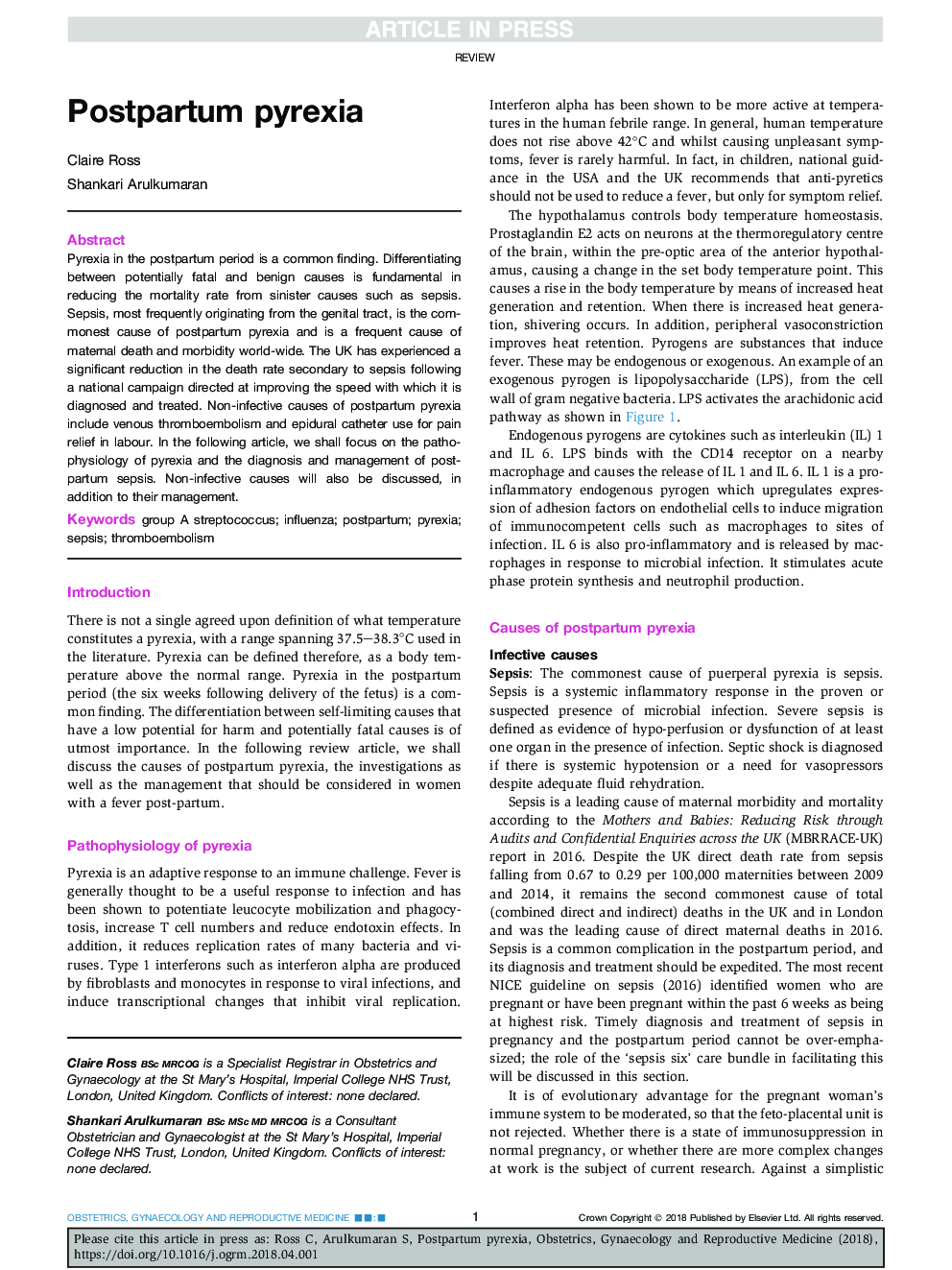| Article ID | Journal | Published Year | Pages | File Type |
|---|---|---|---|---|
| 8783387 | Obstetrics, Gynaecology & Reproductive Medicine | 2018 | 6 Pages |
Abstract
Pyrexia in the postpartum period is a common finding. Differentiating between potentially fatal and benign causes is fundamental in reducing the mortality rate from sinister causes such as sepsis. Sepsis, most frequently originating from the genital tract, is the commonest cause of postpartum pyrexia and is a frequent cause of maternal death and morbidity world-wide. The UK has experienced a significant reduction in the death rate secondary to sepsis following a national campaign directed at improving the speed with which it is diagnosed and treated. Non-infective causes of postpartum pyrexia include venous thromboembolism and epidural catheter use for pain relief in labour. In the following article, we shall focus on the pathophysiology of pyrexia and the diagnosis and management of postpartum sepsis. Non-infective causes will also be discussed, in addition to their management.
Related Topics
Health Sciences
Medicine and Dentistry
Obstetrics, Gynecology and Women's Health
Authors
Claire Ross, Shankari Arulkumaran,
